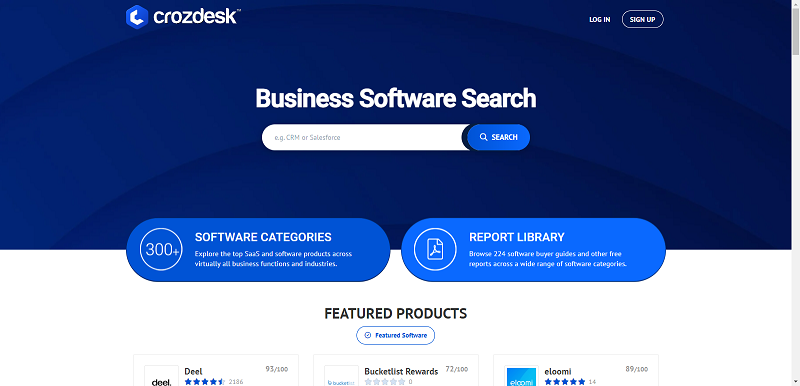There is absolutely no doubt migrating a section of your IT assets, non-core business processes or the entire spectrum of business systems to the cloud makes immense sense. There are plenty of business benefits linked to cloud computing; most astute businesses are using cloud computing in some capacity or other and if you aren’t doing the same, you are missing out big time.
However, a move to the cloud must be backed by a comprehensive understanding of cloud technology, the market, your needs and what you want to achieve with cloud adoption. Deciding to move business assets and data to the cloud shouldn’t be a half-baked decision. It needs to be well-thought out so that you are able to achieve your goals without any problems whatsoever.
There are also certain pitfalls you need to keep in mind when you are thinking of migrating applications to the cloud. These are the kind of mistakes that can prove very costly in the long run, and turn your cloud move into an unmitigated disaster.
So, let’s take a look at five such mistakes:
Not all cloud providers are the same when it comes to reliability, scalability, connectivity, security and support. Research the market thoroughly before zeroing in on the cloud provider you believe is perfect for your needs. Choosing to go with one of the top cloud services providers is a good idea as the big players in this field will not only offer you the best prices but a wholly satisfying services portfolio as well. A word of warning – don’t get sucked into a service-level agreement without going through the agreement in detail. Avoid signing up for a service that you are not 100% happy with.
Another thing – you might come across a cloud player who is offering services for bottom of the barrel rates. Don’t just get attracted to the price; make sure the provider meets the highest standards of security compliance and offers the kind of elasticity and support you need. You don’t want to end up in a situation where your data gets compromised and the service is not to your liking.
This is why choosing the right service provider is an absolute must.
What do you want to use cloud computing for? This is the question that needs to be answered threadbare. Inability to get a perfect understanding of your needs and requirements might see you choosing a delivery model that is not suited for your needs; as can be imagined this results in a failure to reap the benefits of the cloud.
If you want to affordably implement complex solutions like Human Resource Management (HRM), Management Information Systems (MIS) etc., you will need to pick Software as a Service rather than Platform as a Service. On the other hand, if you want to outsource complete infrastructure to support your business operations, Infrastructure as a Service will be a perfect choice. Making the wrong choice will deliver diminishing returns or no returns at all.
What if you want to maintain complete control over the cloud and want greater levels of security and control? This is non-negotiable because your business is operating in a domain where the management, control and protection of data are of paramount importance. Now think of a situation where you decide to deploy some sensitive processes to the public cloud. The fact that such clouds are managed by third party providers means you will have to relinquish control. In this particular case, you have made a big mistake in choosing the public cloud; a better choice would have been a private cloud.
In case you are ok surrendering control of non-critical processes, and want to maintain control of the business critical processes, you could pick the hybrid cloud.
Picking the right cloud environment is therefore very important. In a worst case scenario, the wrong environment can lead to your sensitive data passing into unauthorized hands.
Depending on cloud providers for running your applications or for data storage and trusting their security, maintenance and support structure is all well and good, but what happens if and when things go wrong. You need to plan for the unexpected before moving to the Cloud. For e.g. what happens if an unauthorized party breaches the cloud. What happens to your data then? How soon can this breach be plugged? In such cases, will the personnel administering the cloud at the service provider’s end be able to see your data? What happens if there are technical problems? Does your business have a system in place where it can still access necessary data?
You might think such situations are in the realms of conjecture and can never happen. But, they can. It will be a good idea to plan for them so that you have a solution on hand if and when things go wrong. For this to happen, you not only need to thoroughly assess the risks associated with the cloud but find a solution for the same.
This is another mistake that a business mustn’t make. While your third party providers have all the experience and expertise needed to ensure their cloud services run smoothly, you still need in-house technical expertise to make sure your use of the cloud is able to deliver the returns you are looking for. Also, somebody with the requisite knowledge of cloud technology can help you put in place solutions for the risks we discussed in the earlier point. You need a person/team that can implement your business’s cloud strategy for you and ensure it is optimally managed and controlled. This is how you can maximize the potential of the cloud for business benefit.
The idea is to make informed decisions when you decide to move applications/processes/data/IT assets to the cloud. Know everything there is to know about cloud technology, its deliverables, risks and the migration process before you actually get started on the whole exercise. This will help you take the right decisions and maximize your benefits from the cloud.
By Stan Roach





